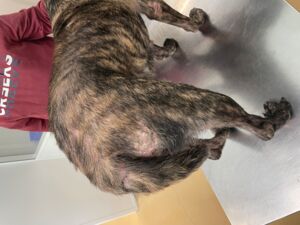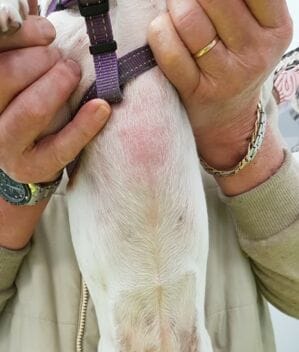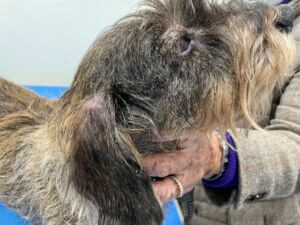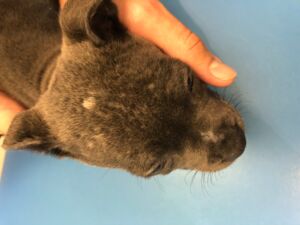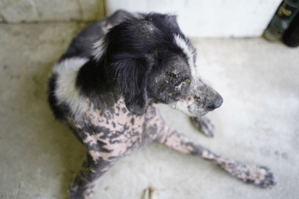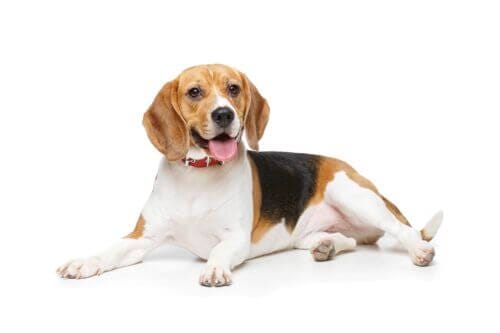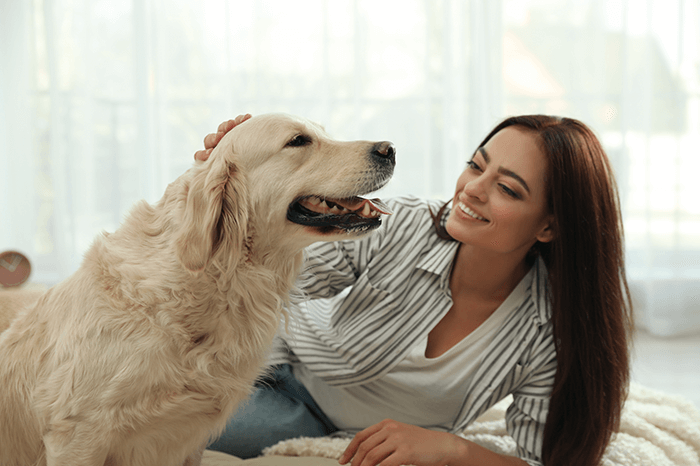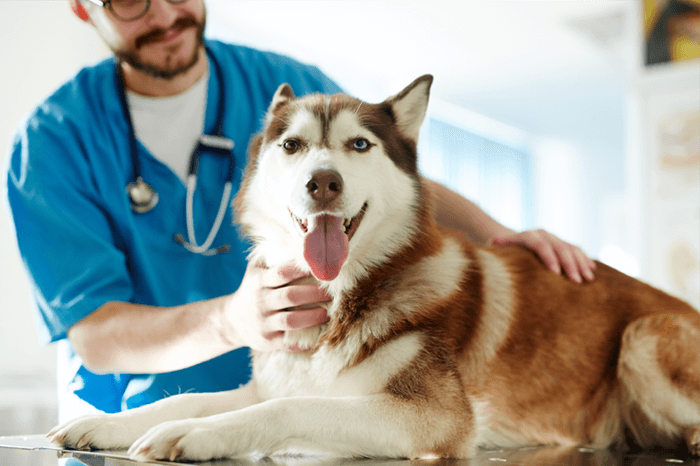All you need to know about hair loss in dogs
Marina G VeterinarianHair loss, apart from the seasonal ones not inducing any bald areas, can be caused by many conditions. Your vet is your major ally in the search for the cause and in the most appropriate treatment.
Hair loss (called by your vet alopecia) is a frequent problem seen in dogs that can be caused by a number of dermatologic conditions and other diseases.
Depending on the underlying cause, hair loss can present with different patterns, and it’s often accompanied by other skin lesions, such as dry skin, inflammation and infection.
If you notice bald patches of skin on your dog or any other type of skin lesion, don’t hesitate to seek veterinary advice.
How can you tell if your dog is losing hair?
If you notice that the look of your dog’s coat, which was previously lustrous and dense, now seems thin and sparse, your dog may have a problem causing the hair to fall excessively.
But hair loss may not be a generalised problem and may be localised to a specific area of your pet’s body.
This means that, depending on the underlying cause, hair loss can present with different patterns and distributions.
Also, it’s important to keep in mind that there will be times when your dogs will shed more than others. This usually happens in spring and autumn but can differ according to your dog’s environment. This hair loss is part of dogs’ natural hair growth cycle. However, it should not result in bald patches on your pet’s skin.
What causes hair loss in dogs?
Usually, there are two types of problems that can lead to hair loss – problems that cause itchiness (pruritus), and problems at the level of the hair follicle or that affect hair growth.
In pruritic diseases, hair loss is secondary to self-trauma (scratching, rubbing, biting and nibbling). Usually, if your dog is itchy, you will find lesions on their skin, including redness, sores, wounds, scabs and infection.
As for problems at the level of the hair follicle or that affect hair growth, these result in what is called true alopecia, as hair loss is not due to trauma.
It is very important to try and understand if your dog is feeling itchy or not, as this will impact the diagnostic process.
Pruritic conditions
Common causes for itchiness in dogs include:
External parasites
Fleas, ticks, mites, and even mosquito bites are frequent causes of itchiness in dogs. Hair loss due to fleas is in many cases localised on the dorso-lumbar area, close to the tail. Regular treatments with a product that kills external parasites but also has a repellent component are very useful to prevent this type of problem.
Allergies
Allergies are also common in dogs, and dogs can be allergic to many different things. From flea’s saliva (flea allergy dermatitis) to allergens present in your pet’s environment (atopic dermatitis) or even their food (food allergies), several allergens can trigger an allergic problem in dogs, and there are some breeds more prone to develop allergies than others.
Secondary infections
Secondary infections (linked to bacteria or yeasts) are frequent complications of any aggression to the skin. This means that anything that causes skin irritation or that compromises the skin’s health can lead to the development of these problems. Hair loss is generally not the only sign, seen along with pustules, crusts, darkened skin, etc.
Acral lick dermatitis
In acral lick dermatitis, dogs persistently lick an area of their leg. This can be the result of a systemic disease but can also be psychogenic in nature, meaning that there’s usually an underlying behaviour problem that needs to be addressed. Even though it may not start with pruritus, itchiness and secondary infections are likely to develop.
Also, there may be a concurrent skin disease or lesion that first triggers this compulsive licking behaviour.
Non-pruritus-induced hair loss
There are also several diseases that can lead to true alopecia, including:
Endocrine diseases
Hypothyroidism and Cushing’s syndrome, for example, are systemic diseases often accompanied by hair loss and other skin lesions in dogs. In dogs affected by these hormonal conditions, the skin tends to get very fragile, dry, and lose elasticity, and the hair also gets thinner, dull and falls easily. Also, endocrine diseases are often associated with a symmetric pattern of hair loss.
Parasites/fungus
Many parasites / fungus can cause hair loss in dogs, let’s present the most common ones. First, we can mention scabies, a highly contagious skin disease that can be transmitted to humans and other pets. Lesions often affect the underside or belly, elbows, feet, face, and ears. Hair loss is linked to the parasite but also to itch as scabies are usually quite pruritic.
Demodectic mange is caused by a mite that normally lives in dog’s hair follicles –Demodex canis. In some dogs with compromised immunity, there’s an overgrowth of these parasites that leads to focal or generalised skin disease. There also seems to be an inherited component to this disease, meaning that some breeds are more predisposed to developing demodicosis than others.
Ringworm infection usually causes very distinguishable lesions, with a circular-shaped bald spot that often has inflamed (red) edges, like a ring. However, contrary to what the name suggests, ringworm is not a parasitic disease. Instead, it is caused by a fungus (dermatophyte).
Auto-immune diseases
Auto-immune diseases are not very common in dogs and are caused by a reaction of the dog’s immune system to normal body structures, in this case, skin cells (although these may not be the only ones affected).
These include diseases of the pemphigus complex (such as pemphigus foliaceus and pemphigus vulgaris) and lupus erythematosus, for example, and can lead to localised skin lesions or overall systemic disease.
Oncologic disease
Skin cancer is common in dogs and, even though it most often manifests as a lump or nodule, it can be associated with other skin lesions, including hair loss.
Other conditions
Although rare, other occasions where hair loss may be seen in dogs include anagen or telogen defluxion (hair loss during the active phase or resting phase of the hair cycle which could be caused by illness, shock, malnutrition or metabolic or endocrine disorders); colour dilution alopecia (a hereditary skin disease), canine flank alopecia (hair loss over the flanks – the side of the chest or abdomen – cause unknown, but may be due to light exposure as it often occurs at points in the year when daylight is at its shortest), congenital hypotrichosis (a rare, congenital disorder of the hair follicles) and black hair follicular dysplasia (a rare genetic disorder where hair loss occurs in black coloured areas of a dog’s coat).
In diseases that cause primary alopecia, pruritus can be variable. Also, it’s important to keep in mind that these are often complicated by secondary infections that cause itchiness. In these cases, the infection needs to be treated before the underlying problem can be better understood.
Which dogs can suffer from hair loss?
All dogs can suffer from hair loss; however, there are some breeds that are more likely to be affected as they are predisposed to the underlying conditions, such as:
- Hypothyroidism – e.g., Golden Retrievers, Irish Setters, and Beagles;
- Cushing’s syndrome – e.g., Dachshunds, Boxers, and Poodles;
- Demodicosis – e.g., Shar Peis, West Highland White Terriers, and English Bulldogs;
- Allergies – e.g., Labrador and Golden Retrievers, German Shepherds, French Bulldogs and Pugs;
- Cutaneous infections – breeds that have long ears, such as Cocker Spaniels, and Basset Hounds, are prone to ear infections; breeds that have skin folds are prone to infection of those areas as well, such as Shar-peis, English Bulldogs and other brachycephalic breeds; breeds that are prone to any type of skin disease are also more likely to get secondary infections.
What can you do to help your dog?
If you notice that your dog is losing hair or if you find any other type of lesion on their skin, we recommend that you seek veterinary advice.
Hair loss in dogs can be caused by a variety of problems and it’s essential to determine why your dog is losing hair to start appropriate treatment.
Topical products will help repair the skin barrier and soothe your pet’s itchiness, with ingredients being absorbed instantly right where they are needed. This, in combination with treatment directed at the underlying cause (which can include topical products, depending on what your vet has found to be the cause), are the two key elements that will restore your dog’s skin health.



